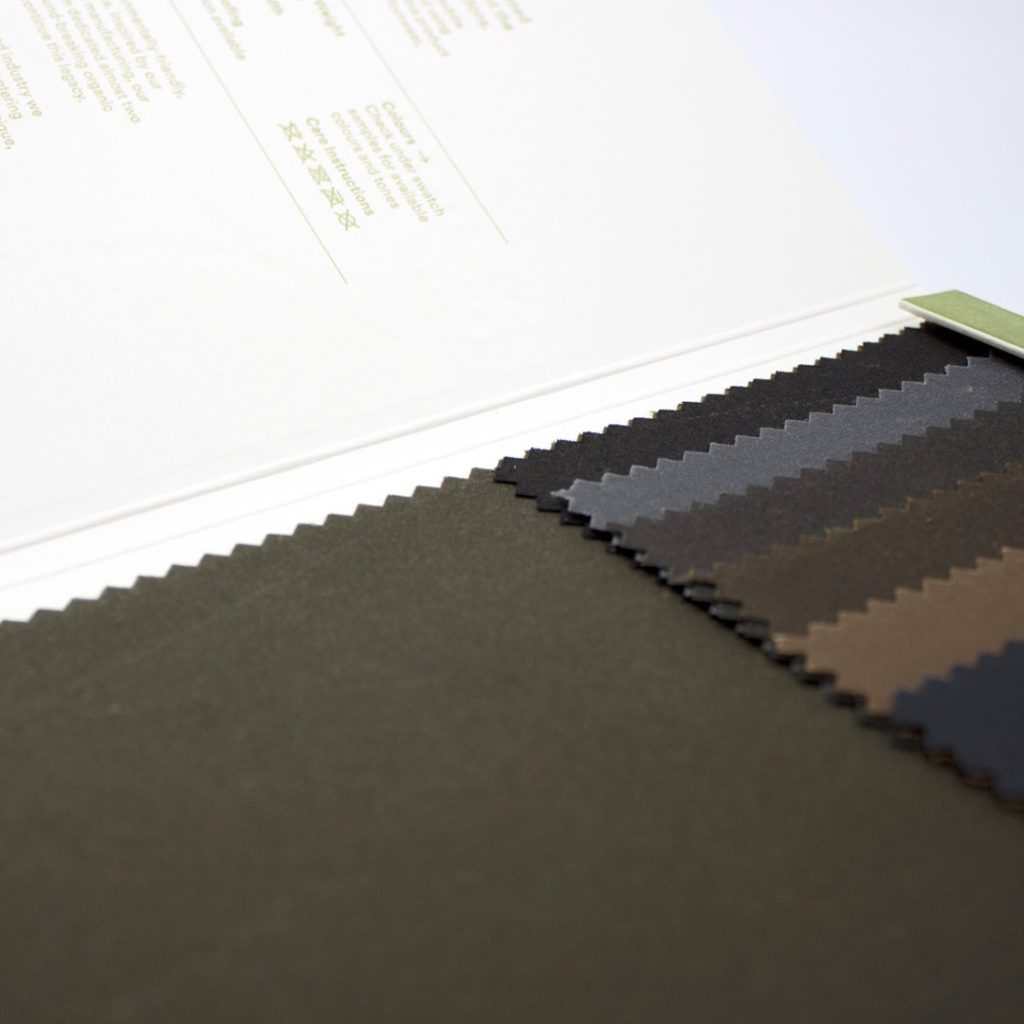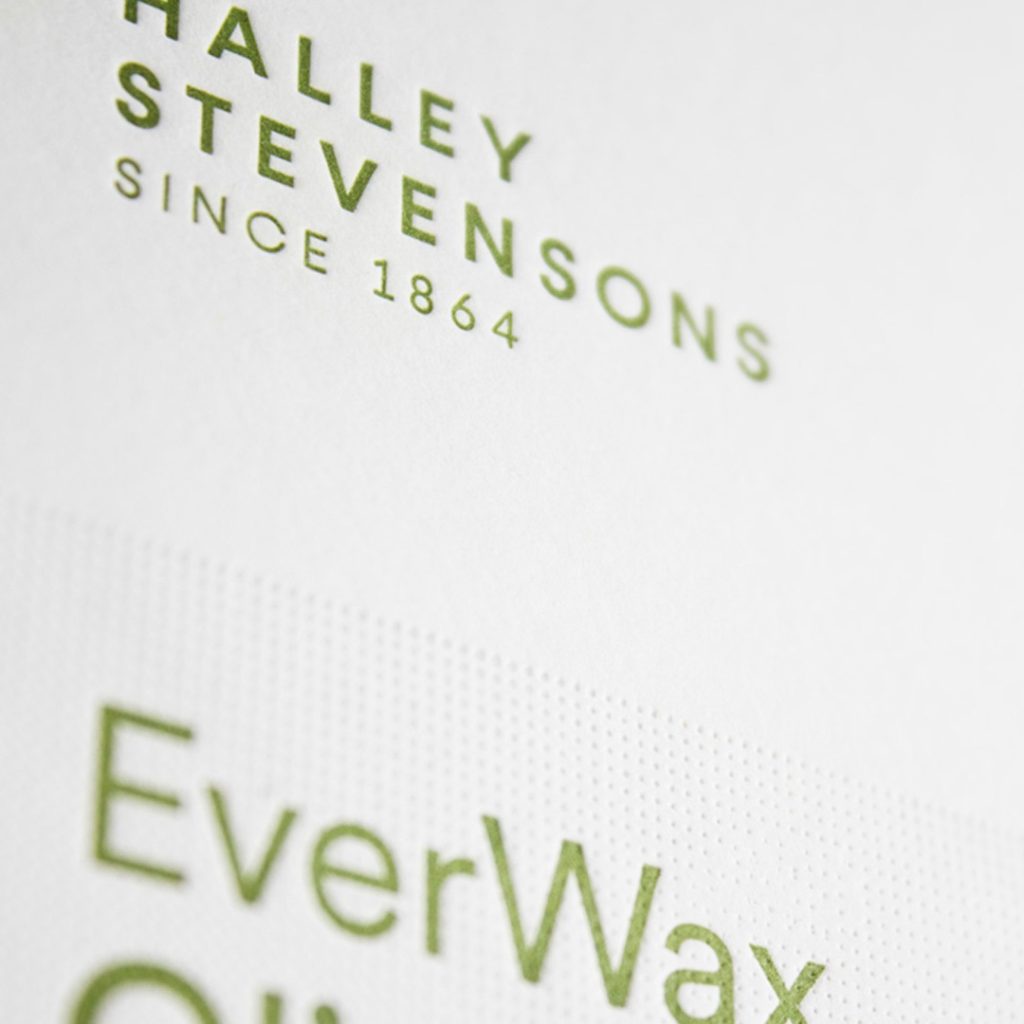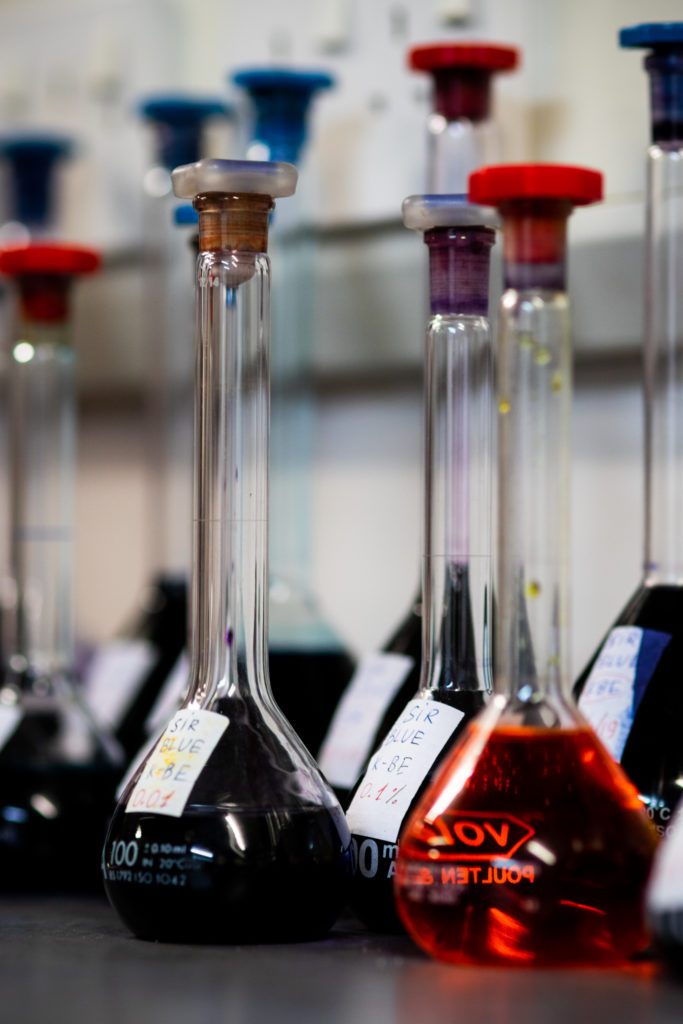Waxed fabrics for the future: Halley Stevensons for British Textile Week 2022
04/02/2022
We caught up with Jimmy Campbell, the managing director of Halley Stevensons, as part of UKFT’s British Textile Week to discuss textile innovation at the Dundee-based waxed cotton specialist.
With a mill based in Dundee, Scotland, Halley Stevensons has a rich textile history, proudly dyeing and finishing under one roof. But this is not a company that is willing to rest on its laurels and focus only on its heritage. Underlining its commitment to sustainability by becoming a Bluesign partner last year, Halley Stevensons is also implementing a 3-year capital spend plan worth £3.5million to update machinery to lower its carbon footprint.

The company was originally formed in 1864 as a jute weaver, known as Francis Stevenson. At that time, Dundee was the jute capital of the world and there were many mills on in Dundee. However, the difference for Francis Simpson was that it quickly evolved into dyeing and finishing, and by 1910 had been awarded the UK patent for cleaning and weatherproofing fabrics.
“Our technique was used by the UK army for covers and tarpaulins for many years and really started our journey into fabric dyeing and finishing,” said Jimmy. “By the early 1980s, that business joined up with George Halley’s to form Halley Stevensons. These days, we are known as makers of weather resistant outerwear and luggage canvas fabrics, and we specialise in wax bonds.”
The company was delighted to be recognised for its continual innovation in textiles, winning fashion supplier of the year 2021 at the Drapers Awards.
“It was a great honour and especially nice to receive it for innovation,” said Jimmy. “I think it shows how far the business has come over the years.
He explained that while the company has long been focused on innovation, now it is investing in new technology and machinery to take the firm in a new direction.

“We’ve just invested in some of the latest coating equipment and we see this being key to certain types of fabric finishes that we want to offer in the future,” he said. “That, in combination with all our other finishing techniques, will open up a new area of product development for us.”
Most developments are covered by non-disclosure agreements (NDAs) for the customers they work with but generally the firm is always looking at the new advancements and processes of managing new wax treatments for the future, as well as more and sustainable and innovative practices.
Halley Stevensons has most recently launched the EverWax range, which is an umbrella brand to showcase products that the company is developing to repurpose waste materials through the food and plastic industries.

The first product is EverWax Olive which uses Triglyceride waste oil from oil production as its key component. This is blended with rapeseed from Northern Europe and castor bean from India. Castor bean is known as one of these kind of revolutionary crops that doesn’t need any pesticides or water to grow. The combination of these three ingredients works very well to replicate the kind of petroleum blends that Halley Stevensons also works with.
The next product is EverWax Vintage Dry Desert, which features 20% wax that has been generated from post-consumer plastic waste. The plastic is put through a chemical process called pyrolysis, which uses heat to break down plastics into waxes. Essentially this takes something that is not biodegradable (plastic) and converts it into something that offers protection and is biodegradable, bringing an end of life strategy.
Sustainability is at the front of mind of Halley Stevensons’ latest developments, Jimmy said. “Our aim is to supply good quality fabrics that last a long time, using minimal amounts of energy and waste. We buy good grade cottons, which we believe is essential to save time and energy in the manufacturing process. You don’t need to bleach mercerised cotton if you buy a good one, for example. Our fabrics are predominately from the US, we buy a little bit of Australian cotton and our organic cotton comes from India.”
Halley Stevensons received Bluesign certification at the end of 2021, which it has been working on for the last year.
“We see it as a tool that we’re going to use to drive our continual improvement and partner with like-minded brands and suppliers,” he said. “It was an obvious choice was because most of our suppliers were already using Bluesign and some were starting to. It is really a way of kind of formalising what we’re doing anyway but it is working well.”

Rising energy costs and the push to net zero is placing new demands on the textile industry, while cotton prices are high at the moment, particularly for organic cotton. As a result, Halley Stevensons is looking to counteract some of these increases by upgrades in machinery.
“We’ve upgraded most of our dyeing and finishing equipment in the last three years and the latest two pieces of equipment that we’re putting in just now are a new jig and stenter. Between those two bits of kit that utilise the latest types of high efficiency boiler systems, we think will save about 35% on our gas in 2022.”
Looking to the future, Halley Stevensons has a five-year plan to structure the long-term direction for the business but Jimmy believes that flexibility and adaptability are extremely important in textiles.
“I think we’re quite good at that,” he said. “A combination of having a long term plan and having that adaptability to change the things to respond to unexpected opportunities and threats is where we’re going. I don’t think we want to change too much. We’re quite happy with the direction we’re going in so it’s more a case of keeping doing what we do.”
Follow @halleystevensons on Instagram.
